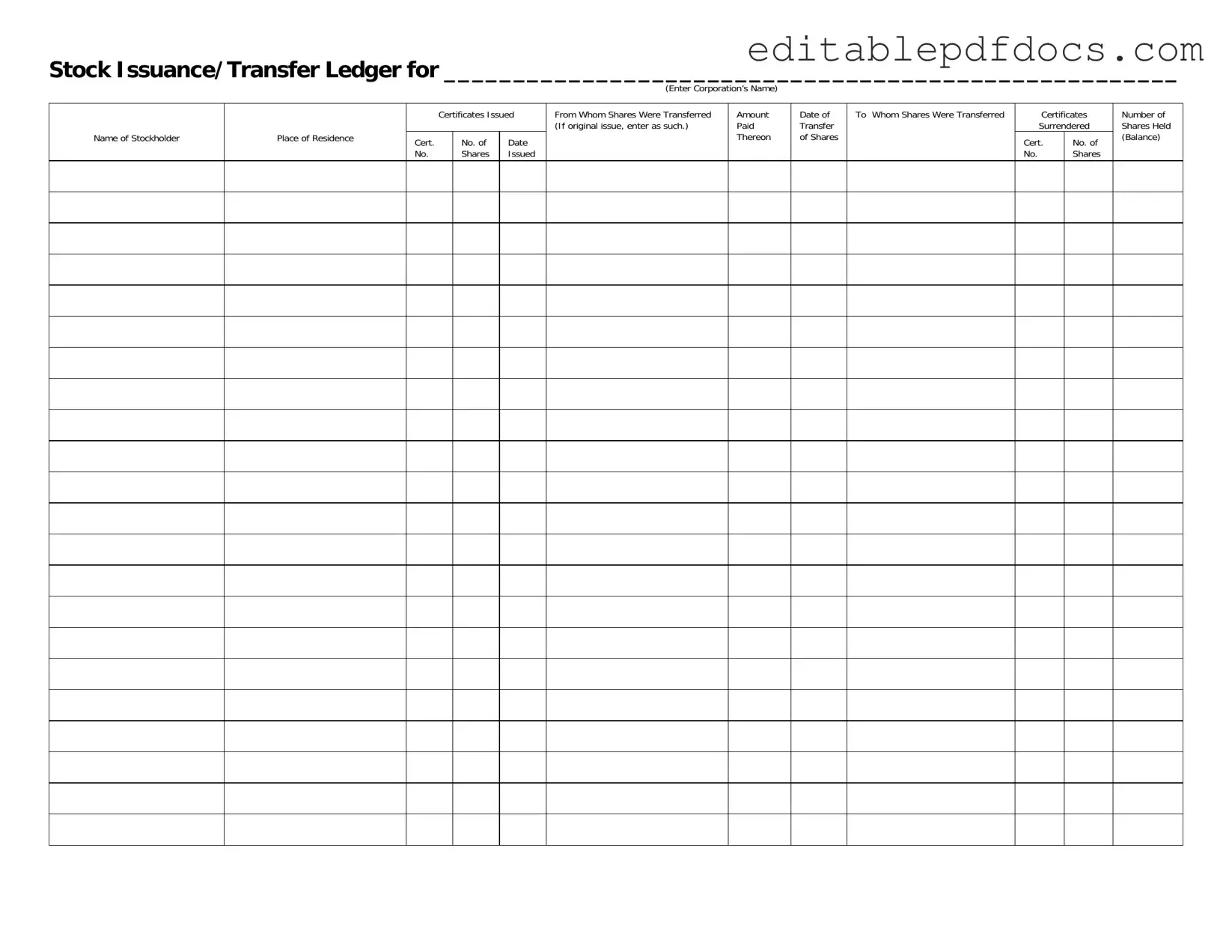Filling out the Stock Transfer Ledger form can seem straightforward, but many people make common mistakes that can lead to confusion or delays. One frequent error is forgetting to enter the corporation’s name at the top of the form. This information is essential for identifying which company the stock pertains to, and without it, the entire document may be rendered invalid.
Another mistake involves the name of the stockholder. Some individuals write their name incorrectly or use nicknames instead of their legal names. It’s crucial to use the exact name as it appears on official documents to avoid issues with ownership verification.
People often overlook the section where they need to specify the place of residence of the stockholder. This detail is important for record-keeping and may be required for tax purposes. Omitting this information can lead to complications in the future.
When it comes to the certificates issued, many individuals fail to accurately record the certificate numbers. Each certificate has a unique identifier, and missing or incorrect numbers can cause significant problems when tracking ownership.
Another common oversight is not providing the date of issuance for the shares. This date is important for establishing the timeline of ownership and can affect the rights associated with the shares. Make sure to double-check this detail.
In the section that asks for the amount paid for the shares, mistakes can occur if individuals do not include the correct figures. This information is vital for understanding the financial aspects of the transfer and should be filled out with care.
Some people forget to indicate the date of transfer when shares are being transferred. This date is crucial for legal and tax reasons, and failing to include it could lead to disputes about when ownership changed hands.
Another area where mistakes happen is when filling out the section regarding to whom shares were transferred. It’s important to provide accurate information about the new owner. Incorrect details can complicate future transactions and ownership claims.
Additionally, individuals sometimes neglect to mention the certificates surrendered. If shares are being transferred, the old certificates must be surrendered to ensure a clean transfer of ownership. Failing to document this can create confusion.
Finally, people often forget to update the number of shares held after a transfer. This balance is crucial for both the stockholder and the corporation. Keeping accurate records helps maintain clarity in ownership and can prevent disputes down the line.
